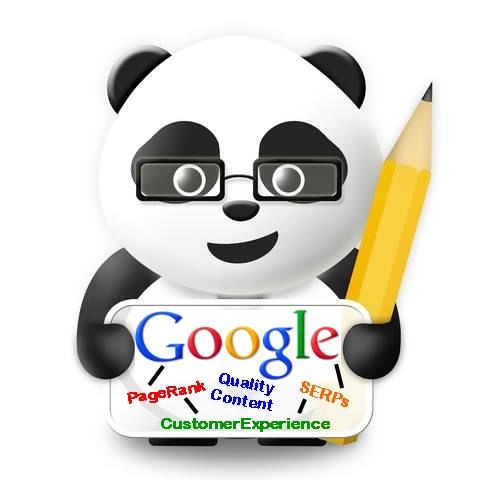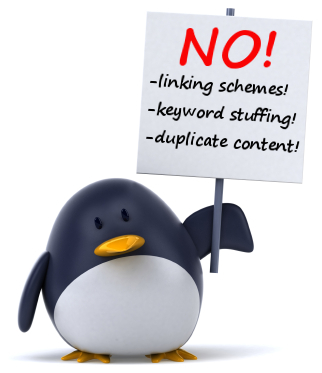Every site owner wants to get ranked on the first page of Google Search. However, Google changes its search algorithm about 500 – 600 times each year. Most of these updates are minor changes to the algorithm; occasionally Google would roll out major updates that tend to affect search results significantly. With constant algorithm updates from Google, including both Panda and Penguin, site owners are living with constant fear that their sites might get affected by the updates and de-ranked from the search engine. Thus it is important to understand what Panda and Penguin updates are, and how to deal with them.
This article will first briefly go over the major Panda update vs Penguin update, then we will let you know how to prepare your site to beat any updates from Google.
What is the Panda Update?
Panda is a filter that lets Google differentiate high quality content from junk content. Every panda rollout is called an “update” because the filter runs periodically and when it runs each time, all the content from Google search engine goes through the filter. Sites with good, unique content will be safe and sites with duplicate and poor content will be negatively affected.
 Panda 1.0: On Feb 24, 2019, Google announced its first-ever penalty targeting content deemed “thin” or “not good enough” as the “Panda Update”. Initially this was released for Google to combat poor content from “content farms” that made Google’s results less relevant. This update affected up to 12% of searches. The update led many site owners to seriously think about good, unique content instead of focusing on optimizing keywords only.
Panda 1.0: On Feb 24, 2019, Google announced its first-ever penalty targeting content deemed “thin” or “not good enough” as the “Panda Update”. Initially this was released for Google to combat poor content from “content farms” that made Google’s results less relevant. This update affected up to 12% of searches. The update led many site owners to seriously think about good, unique content instead of focusing on optimizing keywords only.
*Side note: keep in mind that Panda is just one of more than 200 different factors that Google uses to rank pages.
Panda 2.0: this update was release to handle all English-language queries, affecting worldwide. This included all English speaking countries and English from non-English speaking countries.
Panda 2.1 to 2.4
After Panda 2.0, Google started releasing updates every couple months – mostly just minor changes on monthly basis.
Panda 2.4: This update affected all languages with the exception of Chinese, Japanese and Korean. About 12% of U.S English-language searches were affected while only 6% to 9% of non-English searches were affected by this update.
Panda 3.0: Google did not announce this update, but later claimed that this was a major update in the algorithm. Google did not offer what changes was made to the filter. Google started to rollout updates more frequently but were relatively minor. The updates are still going on. The latest update happened on June 11, 2019.
What is the Google Penguin Update?
The Google Penguin Update was released on April 24, 2019. According to Google, Penguin is an important algorithm update mainly targeted at spamming sites. Web sites that engaged in black hat SEO tactics would likely get into trouble.
Penguin Update 1.0 – April 24 2019
Penguin 1.1 – May 25 2019
Penguin 3 – Oct 9 2019
Penguin 4 – May 22, 2019
Although Google never revealed what elements Penguin pick on, SEO community and internet marketers have come up with some contributing factors. They are listed below.
Things Penguin does not like:
- Excess exact-match anchor text
- Obvious exact-match domains
- Keyword stuffing with internal and outbound links
- Low quality blog spam and low quality article link building
According Google, the first Penguin update impacted around 3.1% of queries. If you saw major traffic loss soon after the update, your site was likely hit by the update. It is still important to optimize your site for keywords, but the content has to be high quality as well. Over-optimization is never good.
How to beat them
So what if you are one of those unlucky ones that had been hit by the update? A request to Google for reconsideration won’t make a difference. The first thing you need to do is fix your site and wait for Google to crawl your site again. Do not panic if you see a down turn in your traffic. If you spend time and effort to fix your site, it will recover.
We have a post on “How to recover from Google Penguin” that you may find useful.
1. Unique & Standout Content is Essential
In many cases of sites hit by Google Panda update, the problem is the lack of content differentiation. If your site is providing the same information / content as hundreds of other sites, then you might be in trouble. If a user didn’t like the 1st search result he clicked on, he doesn’t want to see the same information in the second result they click on. You can look at Panda as a “Document Classifier”, which has the ability to tell Google websites from bad ones. Even if your site is not spamming, in the eyes of Google, it might belongs to bad site group. The reason is that Google think your site over-prioritize revenue generation over the user experience.
So are you scared of SEO linking now? Don’t be. If you do it naturally, especially if your readers do it for you, natural link building can be gold. The key here is good unique content. Remember to implement social sharing buttons on your site so your content can be easily shared. Don’t overdo it though. Too much social sharing buttons on your site will make it look busy and kill the user experience. However, Google+ is a must since it’s from the Search Engine itself. Your latest update from Google+ will actually show up on the right side of search result when people type in your company name. If you have good presence on Google+ and have enough followers, apply to become Google certified; it’s a great way to get recognized by Google, thus a larger presence in the search result.
3. Avoid black hat SEO tactics
By now, you should know to avoid black hat SEO tricks such as comment spamming, low quality / paid link building or duplicate content. Any of these will only harm your site.
If you engage the above practice on your site, then you shouldn’t worry about any update from Google. Remember quality unique content is King.
Google+


